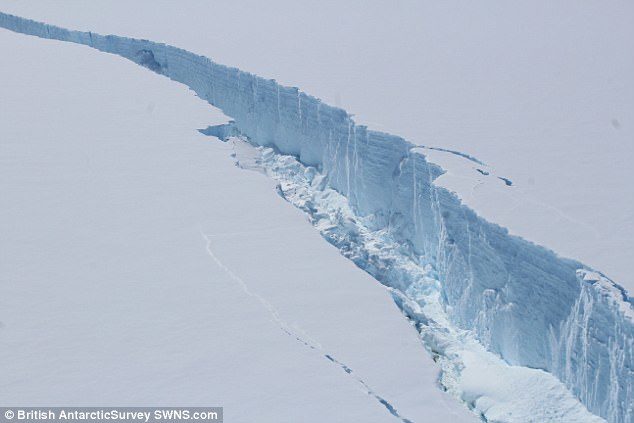
The iceberg weighs a staggering trillion tons and has an area of 2,239 sq miles (5,800 sq km), making roughly the size of Delaware or four times the size of London.
It was found to have split off from the ice sheet after scientists examined the latest satellite data from the area.
The process, known as calving, occurred in the last few days.
The ice shelf has now decreased in size by 10 per cent, leaving the ice front at its most retreated position ever recorded.
If the glaciers held in check by the iceberg now split into the Antarctic Ocean, it could lift the global water mark by about 10 centimetres (4 inches).
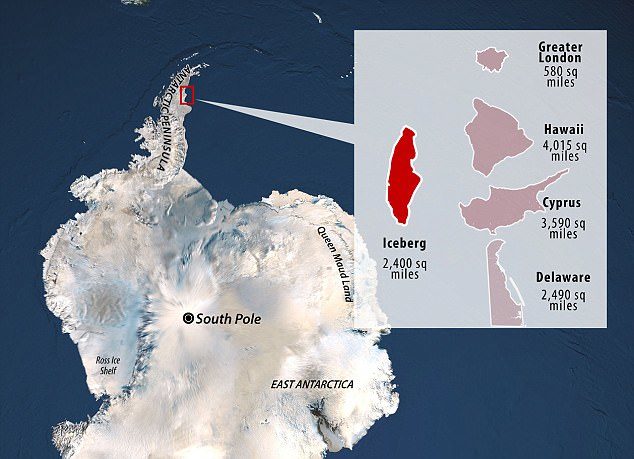
In a statement, Swansea University said: 'The calving occurred sometime between Monday, July 10 and Wednesday, July 12, when a 5,800-square kilometre (2,200-square mile) section of Larsen C (ice shelf) finally broke away.'
Throughout the Antarctic winter, research teams, led by the University of Swansea and including researchers from British Antarctic Survey (BAS), monitored the progress of a 170 km long ice rift in the ice shelf using the European Space Agency (ESA) Copernicus Sentinel-1 satellites.
According to BAS remote sensing analyst Andrew Fleming, the satellite images have been critical for research planning.
He says: 'This story has just got even more interesting.
'Our glaciologists will now be watching closely to see whether the remaining Larsen C Ice Shelf becomes less stable than before the iceberg broke free, and our biologists will be keen to understand how new habitats formed by the loss of the ice are colonised.'
Icebergs calve from Antarctica all the time, but because this one is particularly large its path across the ocean needs to be monitored as it could pose a hazard to maritime traffic.
The massive ice cube will float in water and by itself will not add to sea levels when it melts.
But the real danger is from inland glaciers.
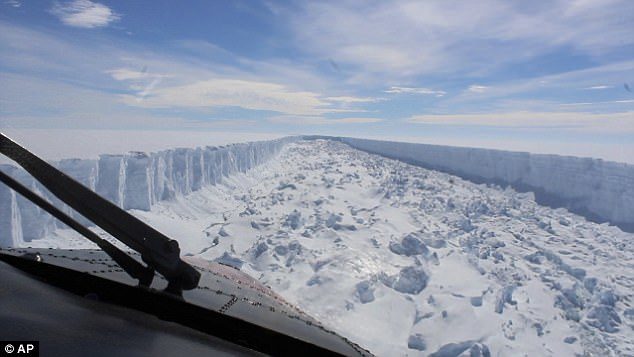
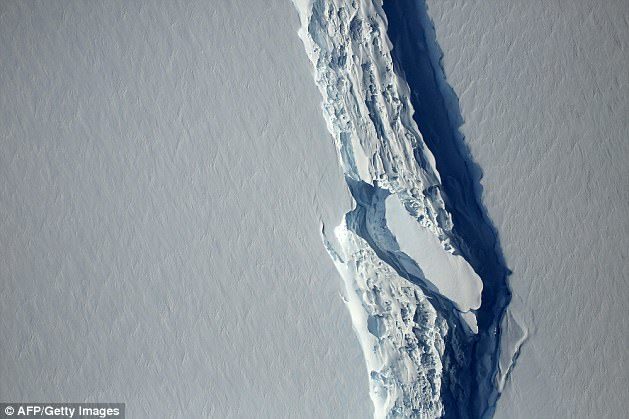
They act as giant brakes, preventing glaciers from flowing directly into the ocean.
If the glaciers held in check by Larsen C now split into the Antarctic Ocean, it could lift the global water mark by about 10 centimetres (four inches), researchers have said.
The growth of the crack, given our current understanding, is not directly linked to climate change.
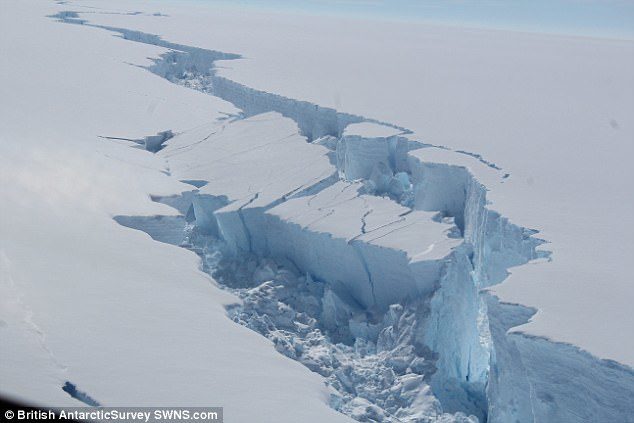



Reader Comments
to our Newsletter